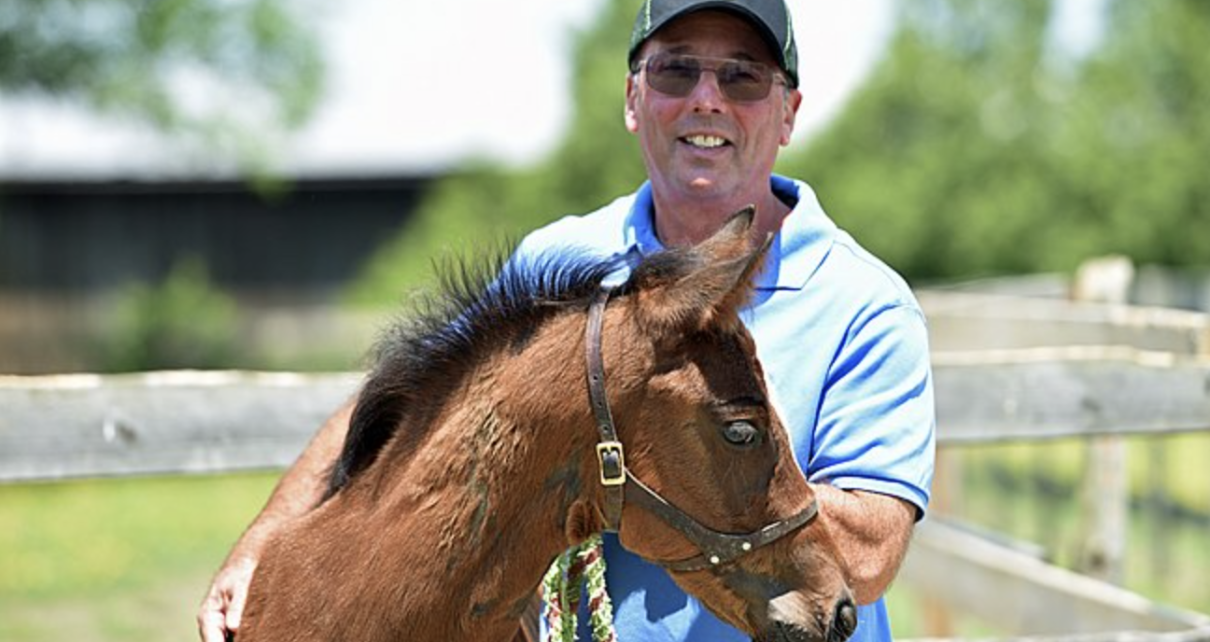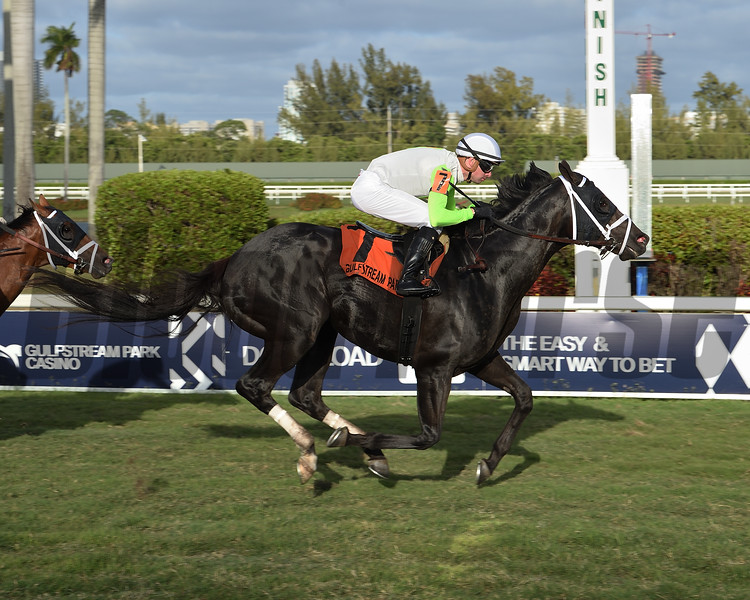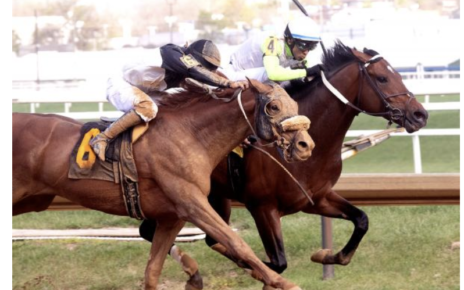When Stuart Grant isn’t working as an attorney and hedge fund manager or contributing to numerous philanthropic endeavors, he finds his “happy place” in horses. After buying his first racehorse in 2002, Grant’s influence in the industry has grown to include two separate facilities: C-Dog Farm in Chesapeake City, Md., home to his breeding operation, and the Camden Training Center in Camden, S.C., which boasts 360 acres, multiple tracks, eight polo fields, and 10 barns.
Grant is one of the top owners and breeders in the country and has campaigned multiple graded stakes winners, including Lady Fog Horn , Social Paranoia , and Edge of Reality , which all raced under the banner of The Elkstone Group. He was also a partner in seven-time grade 1 winner and dual champion Monomoy Girl and the 2019 champion 2-year-old filly British Idiom .
Grant spoke with BloodHorse MarketWatch about his start in the industry, training facility, broodmare band, recent purchases from the Fasig-Tipton July Breeding Stock Sale and The July Sale, Fasig-Tipton’s selected yearling sale in Kentucky, and favorite racing memories.
MarketWatch: How did you get your start in the industry?:
Stuart Grant: I’ve always loved horses, and people would ask me, “Did you grow up with horses?” and I’d say yes, but they all had cops on them because I grew up in Brooklyn. My grandfather used to take me to Prospect Park; they had horses there, he’d put me on his shoulders and run around the track. I don’t know how I had this love affair with horses, but when I was in high school, I learned how to handicap, and I was good at science, but what I took from there was handicapping. We used to drive down during free periods, go to the OTB (off-track betting), and put in bets for the science department and us. In college, we started having Kentucky Derby (G1) parties, and I always loved the horses but owning one was a dream.
At about age 37, I started my law firm, and by age 41, it began to go well. Delaware Park had been the first racino, and we’d lived at Delaware Park, and we figured that this might make sense. I’m looking at the purse money, what it cost to claim a horse, and I thought, we can do this.
I got someone to introduce me to a trainer and I claimed my first horse. And probably the worst thing that could have happened—happened. The horse won, and at the end of the year, we had made money, and I said to my wife, “Look what we made with one horse. Can you imagine what we’d make with two, three, or four?” I learned an important lesson: not to make decisions based upon the sample size of one. That’s sort of how we got started. From there, things just seemed to multiply, and now we have two farms, and I don’t even know exactly how many horses, but there is over 100 head in the breeding operation and the training center. It’s been a great ride.
MW: How did you acquire your two facilities?
SG: About 15 or 16 years ago, I had bought a couple of yearlings, and I had sent them down to the Camden Training Center to get broke. As it turns out, unrelated, I wound up having a huge case in Columbia, South Carolina, which is only about 30 minutes from the Camden Training Center. It was a seven-week jury trial, but we went down there for longer than that (12 weeks).
One of the rules I have when conducting a jury trial is that you have to take some time off from the team because it’s super intensive. So, after we had dinner Friday night, sort of a team dinner, we always got time off (on Saturday) until about 3 in the afternoon, and you could do anything you wanted, except you couldn’t do it with anyone else on the team. Everybody had a happy place and something they wanted to do. I found out that I didn’t know how far away Camden was; it was only half an hour away. Every Saturday morning during the trial, I’d go out early in the morning and watch the horses train—it was my happy place, my blood pressure went down.
In the afternoon, I’d come back and get ready for trial prep and all that stuff. About halfway through, I learned Henrietta Alexander was selling the training center, and it was already a done deal, and they had a buyer. Then the last week of the trial, I found out that the deal fell through. Two days after that, we got a verdict that was the largest in South Carolina. I knew I was going to get paid a lot of money. I turned to my opposing counsel, the largest law firm in South Carolina, and asked them if they did real estate. They said yes, I said I want to hire you … I’m getting paid a lot of money here, and I think we need to recycle it. Within a week, they bought the training center for me. It was all related to a big case, and I’m thrilled that I did it.
MW: Tell us about your broodmare band. Do you sell or race?
SG: I got into breeding accidentally. I had race fillies, and then I needed to do something with them when they were done at the track, so I thought I should breed them. As I learned more about breeding, I started getting a lot more direction and purpose. Over the last several years, we have upgraded our broodmare band. We breed primarily to race. We’ll sell some, but we drop anywhere from 18-20 foals a year, and we probably sell five of those and keep the rest to race as the core of our racing stock.
MW: You bought two mares in foal to Violence this past week. What are your plans for them?
SG: I’m all in on them. I own two shares of Violence. Too Much Prada (a $150,000 purchase) has a beautiful Violence filly by her side. That’s what sold me on the package. If I could find some mares that cross well with Violence especially… the foals I have seen on the ground really excite me. The plan is to foal her out, and hopefully, we will get some quality foals from her. I love what I see so far.
The other purchased mare, Medea in foal to Violence, which I thought was a good cross. The mare was open the past year, and the year before that, she was one of the few outside boarders I took on the farm and foaled there. She didn’t meet her reserve, and I got to see the mare a bunch of times on the farm. I liked the mare, I liked the cross, and it was fairly inexpensive ($40,000), so I picked that one up.
MW: Among your purchases were five yearlings. What are the plans for those horses?
SG: The one I like talking about is the Justify (Hip 149). It’s an exciting but unproven sire that sold well. She’s out of a grade 1-winning mare (Emma’s Encore ). When you get a filly like that out of a graded-winning mare with a top sire, you think “I would love to get a runner,” and if it runs, she can become a foundation mare for the breeding operation. We had to spend some money to get her ($210,000).
The others were all in the $35,000-$75,000 range, and I like buying yearlings at that price point. Particularly fillies. We’ve been very fortunate with some good fillies, and we’ve always spent $100,000 or less on those and wound up with grade 1 winners. Colts are a little tougher because people spend some real money on them. We race all over, but we have a lot in the Mid-Atlantic.
If you buy well and get a decent horse as an allowance horse, you can do OK with them. Not every horse that we buy is aimed for graded stakes races. Some of them you can buy at a reasonable, fair price, you can have some good fun, and not get hurt. That’s really what the others are all about.
MW: What is your favorite racing memory so far?
SG: The Elkstone Group has had a lot of incredible moments. If I could lump one, I’m not sure if I could go back to the Breeders’ Cup because the last four years, we’ve had horses in the Breeders’ Cup, and all four have won. The idea that we have four consecutive Breeders’ Cups, as an overall experience it is something that fairytales are made of.
There’s one that’s a non-winning one. We had a homebred that went off at 32-1 in the Travers (G1) and finished third (J W Blue in 2011). We were partying like we won the race. There have been so many fortunate experiences that we’ve had that I’m not sure I could pick a single one out.





